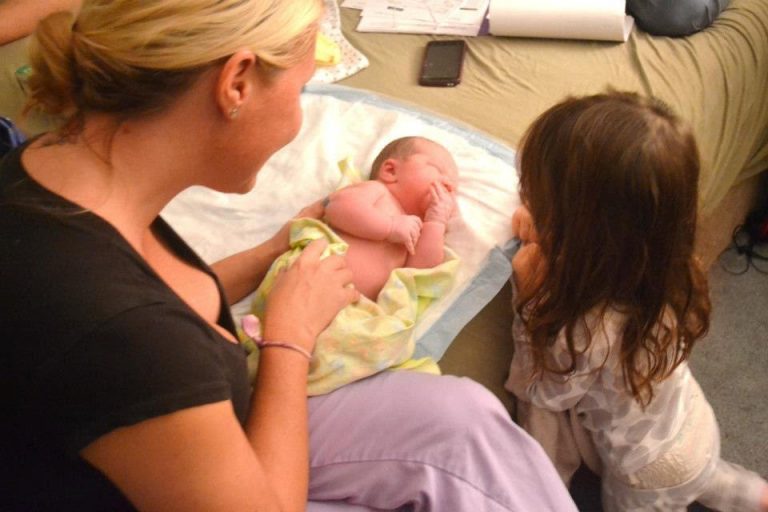How to Pump Like Pro: Everything You Need to Succeed
8 minute read
Life becomes pretty busy when you have a new baby in tow — but pumping may be just the thing to make your feeding journey as smooth as possible.
Maybe you’re planning to head back to the office, travel to your sister’s bachelorette party, or finally go out on a date night…Or maybe you simply want your partner to take on a night feeding so you can get a nice 4-hour stretch of sleep…
Pumping can give you the freedom of time away from your little one. And it’s also a great option to help you maintain — or even increase! — your milk supply to build that freezer stash you’ve been dreaming of.
And the best part? Pumping is an incredible resource that all new parents can try (most insurance plans cover a breast pump for free). It may seem intimidating at first, but with our helpful tips and tricks below you’ll be well on your way to pumping with ease.
When to Start Pumping
The truth is, there is no “right” answer for when to start pumping.
Many pediatricians and lactation consultants encourage waiting to add pumping into your feeding routine until 4-6 weeks after your baby has been born. This will give you and your little one plenty of time to get chest/breastfeeding established (so that your body produces exactly the right amount of milk that your baby needs).
But this is just a guideline — not a hard and fast rule.
You may need help getting your baby to latch… And pumping can help establish your milk supply while your baby learns how to nurse. In this situation, you may want to start pumping while you’re in the hospital or shortly after you arrive home with your baby.
Or maybe your baby needs to bump their weight up. Pumping can help boost your milk supply which can provide your little one with the extra nutrition that they need.
When you start pumping will be totally unique to your experience and your baby’s needs. But it’s a good idea to consult with your pediatrician and your own healthcare provider to determine what’s best for your baby and your body.
How Often to Pump
The best place to start when figuring out how often to pump is by thinking about your feeding goals:
If you plan to be away from your baby…
You may want to pump at the times you would normally offer a feeding. This could be as often as every two to four hours. Try to keep to the same feeding schedule your baby is on while you’re away from them to help maintain your supply.
If you want to increase your milk supply…
To boost your milk production while also nursing your baby, consider adding a pumping session in-between feedings. This will “trick” your body into thinking that it needs to produce more milk for your little one.
Many parents like to pump an hour after their baby nurses first thing in the morning — as this is often when your milk supply is highest. You can also pump for a few minutes right after your baby is done nursing to collect any extra milk.
It can be challenging to squeeze in a pumping session in-between nursing, changing, and rocking your little one. Experiment with different times during the day to see what works best for you and your baby.
If you want to build a freezer stash of pumped milk…
If you’re preparing to return to work, be away for the night, or travel for an extended period, you may want to have some extra milk stored that another caregiver can give to your baby.
To collect extra milk, try adding in a pumping session or two during the day (Or even at night! Your milk production is highest between 1-4 a.m.). You can also try collecting milk from one side while your baby nurses on the other side using a Haaka’s breast pump.
How Long to Pump
For a full pumping session, aim to spend 15-30 minutes using an electric pump (10-15 minutes on each side). Some parents like to pump for longer to try to stimulate another letdown.
If you have a busy schedule you can cut down this time by using a pump that allows you to collect milk from both sides at the same time (with the help of a handy pumping bra).
When pumping immediately after nursing your baby from your chest/breast, aim for 5-10 minutes of pumping to make sure you collect all the extra letdown milk. You may need to pump for a shorter or longer time on each side depending on how much milk your baby drank.
How Much Milk You can Expect to Get from Pumping
You may be wondering how long it will take you to create that beautiful freezer stash. Well, this will totally depend on how much milk your body produces and how often you pump.
If you’re pumping instead of nursing your baby, you can generally expect to collect about the amount of milk that your baby would have eaten. But it’s helpful to know that sometimes it may be a little less.
This could be because your hormones prolactin and oxytocin are super important when stimulating milk production and the letdown of milk. Without your baby, these hormones may not be as high as they would normally be during a nursing session.
It’s also possible that your pump may not always be as successful at drawing out the milk from your breasts (that’s right, your baby is pretty skilled at what they do!).
And if you’re pumping in addition to nursing your baby for all their regular feedings, expect to collect a small amount of pumped milk at first — maybe only half an ounce of two.
But don’t let this discourage you! Keep at it and over time your body will begin to produce more and more milk to keep up with the demand.
Our 3 Favorite Breast Pumping Tips to Optimize Milk Production
So you’ve picked the perfect time to pump…Before even sitting down for your first pumping session, it’s important to do what you can to stimulate your milk production. That way you’ll make the most of those precious minutes you spend pumping!
Step 1: Create a comfortable environment
You want to be as comfy as possible to help you relax and stimulate those good hormones!
If you’re pumping at home, maybe that looks like setting up a little “pumping station” next to your favorite living room chair. Or if you’re at work, having a cozy blanket handy to keep yourself warm while propping up your feet.
Consider dimming the lights, putting on your favorite Spotify playlist or Netflix show to set the mood.
Step 2: Support your body’s nutritional needs
As a nursing parent, you need 16+ cups of water a day to produce the milk your baby needs. Crazy, right?
That’s why it’s a good idea to have your favorite water bottle filled and ready to go before you sit down to pump. You may also want to have a hearty snack or two within arm’s reach in case you get the munchies!
A milk production supplement is also a great way to give your body the boost it needs to keep up with your nursing needs. Motherlove’s More Milk Plus, Legendary Milk’s Pump Princess, and BOOBIE* Bears are parent favorites that we always keep on stock in the boutique.
Step 3: Relax!
If you’re worried about needing more diapers, getting the dishes done, or scheduling that next doctor’s appointment… This anxiety and stress can actually decrease your milk production.
That’s why it’s best to relax as much as you can before starting to pump. Maybe that looks like placing a quick order online, writing a to-do list to clear your mind, hopping in a warm shower, or picking up the phone to chat with your bestie.
It can also help to hear or see your baby while pumping. Whether that’s being in the same room while they play or looking at photos and videos of your little one on your phone… Thinking of your sweet baby will help your body to produce more milk!
Get Started Pumping with an Electric Pump, Hand-held Pump or Manually
It’s easy to get started pumping — all you need is the perfect breast pump! We love Medela’s electric pumps — like the lightweight Medela Swing Breast Pump — for quick and efficient pumping at home or on the go.
We’ve got a great selection of pumps and pump parts available in the boutique! Plus if you need a hospital grade breast pump for your feeding journey, we have those available to rent as well.
Pro Tip: Make the most of your pumping session by using a pumping bra — we love this versatile bustier one! — to allow you to pump hands-free.
And although it takes a bit more work, a manual breast pump — like the Medela Harmony Manual Breast Pump — may be perfect for when you are away from your baby but can’t take your electric breast pump. They’re small and super easy to use.
But if you’re in a bind and don’t have your pump, or you simply want to collect the last few drops of milk by hand, you can always hand express your milk.
How to Store Pumped Milk
Photo of Itzy Ritzy Chill Like A Boss Bottle Bags
Freshly pumped milk can sit on the counter for a maximum of 4 hours. If you’re not immediately feeding your baby your pumped milk, you will want to cool down the milk as quickly as possible.
Store the pumped milk in milk storage bags — these eco-friendly reusable bags are also a great option! — or freezing and storage bottles in your fridge, freezer, or even in a cooler bag if you’re on the go. This will allow you to save your pumped milk for longer periods of time. Refrigerated milk can last 4 days and frozen milk will keep for 6-12 months.
Pro Tip: Make sure to label your frozen milk with the date so that you know how long it’s been in the freezer!
How to Use Pumped Milk
When it comes time to use your stored milk, remember “first in, first out.” Milk quality can decrease over time, so using the oldest milk first will ensure that your baby is getting the best nutrients possible.
Even if you’re in a rush, avoid the temptation to thaw out your refrigerated or frozen milk in the microwave. Instead, try:
- Thawing the milk in the refrigerator overnight
- Setting the milk in a container of lukewarm water
- Placing the milk under lukewarm running water
This will ensure that your pumped milk retains all its natural nutrients and that it doesn’t get too hot for your baby’s mouth.
As a rule of thumb, make sure to use the pumped milk within two hours of thawing (and never refreeze thawed milk!). You can give your baby cold or lukewarm milk — it’s totally your choice!
How to Pump in Public
There may be times when you need to pump at the office, in an airport, or even in the car. This can be a little daunting at first, but being able to pump on the go can be very freeing for busy parents!
If you can’t be in a private room — or just want to make sure you’re covered in case anyone walks in! — you may want to have a nursing cover on hand. The Mom Boss 4 in 1 Cover is perfect for using as a nursing cover. We also love that it can double as an infinity scarf or even an infant car seat cover!
You can also use a simple swaddling blanket if you’re in a pinch. Simply take two of the corners of the blanket and tie them in a knot behind your neck!
Stash your nursing cover in a special pumping bag along with your:
- Electric or manual pump
- Power cord or batteries
- Extra pump parts
- Storage bags or bottles
- Mini cooler with ice pack (if you don’t have access to a refrigerator)
- Pumping bra (if you’re not already wearing it!)
- Breast pads and nipple butter
- Photos of your baby
- Water bottle and hearty snacks
This way you’ll have everything you need to pump all in one place. Just grab your bag and go!
Get Answers to Your Pumping Questions:
We know how intimidating it can feel to start pumping. But after serving thousands of parents along their feeding journeys, we have tons of amazing resources and information to get you the answers you need. Join us for a class or make a 1:1 appointment with one of our International Board Certified Lactation Consultants.
Chest/Breastfeeding for Working Mothers: Planning, Preparing, & Pumping
The Chest/Breastfeeding for Working Mothers class is perfect if you’re a working mom and want to keep feeding your baby chest/breastmilk after returning to the office. We’ll give you the confidence, tools and plan that you need to continue your chest/breastfeeding journey once your maternity leave ends. We hope you’ll join us!
Lactation Lounge for Chest/Breastfeeding Parents
The Lactation Lounge is a wonderful FREE resource to provide you with encouragement and a loving community while you navigate your feeding journey. Plus, it’s facilitated by a International Board Certified Lactation Consultant so you can come ready to ask all your questions and get the help you need!
Title Image by shurkin_son on Freepik






